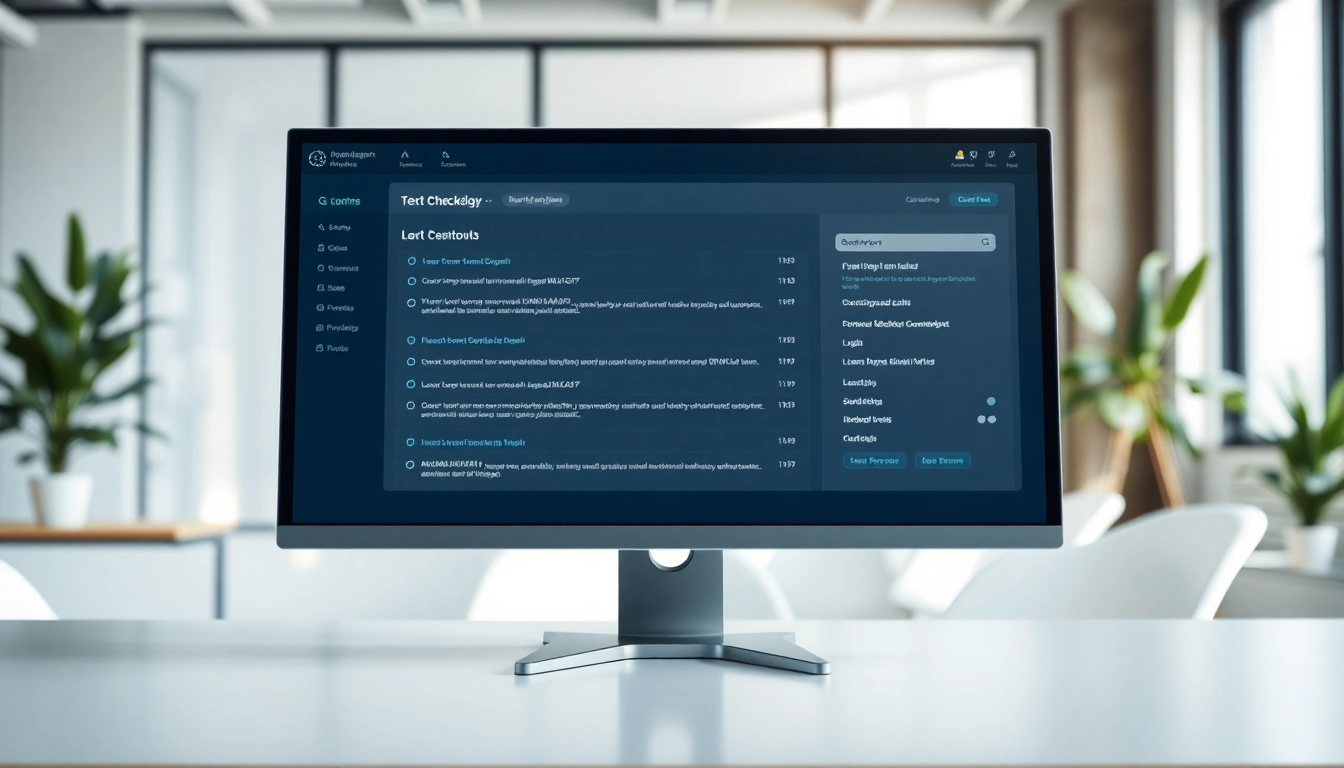Understanding the Basics of KC Website Design
In today’s digital landscape, having a strong online presence is vital for any business or organization. This begins with an effective and visually appealing website that reflects your brand’s identity. One of the primary routes to achieving this is through kc website design, which encompasses a variety of strategies and techniques tailored to create user-friendly and engaging web experiences. Let’s explore the fundamentals of KC website design, its core principles, and why it plays a crucial role in the modern user experience.
What is KC Website Design?
KC website design refers not only to the aesthetic aspects of building a website but also to the functionality and usability that enhance the user experience (UX). It embodies the strategic arrangement of content and design elements to guide visitors seamlessly through the site. In essence, KC website design is about creating websites that are not only visually attractive but also intuitive and effective in conveying messages and driving conversions.
Core Principles of Web Design
Understanding the core principles of web design is essential for anyone looking to create impactful websites. Here are some key principles:
- Balance: The size and placement of elements on a page can create harmony. Visual balance can be symmetrical or asymmetrical, both of which can draw user attention.
- Contrast: This principle helps to highlight key areas of a site, using color, size, and font style to make elements stand out.
- Hierarchy: Organizing content in order of importance helps users navigate and find information efficiently.
- Repetition: Consistency in design elements such as colors and fonts builds a cohesive brand identity.
- Alignment: Proper alignment of elements improves the overall layout and ensures the visual flow is maintained.
Importance of User Experience
User experience (UX) is paramount in website design as it significantly affects how visitors interact with your site. A well-rounded experience can lead to higher user satisfaction and retention rates, ultimately influencing your site’s success. Focusing on UX entails creating a smooth navigation structure, reducing loading times, ensuring readability, and providing accessible content tailored to the user’s needs. With effective user experience, businesses can reduce bounce rates, encourage longer page visits, and foster customer loyalty.
Key Elements of Successful KC Website Design
To create an outstanding website, understanding the key elements of successful KC website design is crucial. These elements intertwine to form a cohesive and functional digital space.
Visual Hierarchy and Layout
The visual hierarchy of a website guides users’ attention to the most important elements. By using size, color, contrast, and whitespace strategically, designers can dictate how users perceive and interact with content. An effective layout organizes this information logically, allowing users to quickly find what they need. Common layout methodologies, such as grid systems, help maintain consistency while ensuring flexibility across devices.
Color Schemes and Typography
Color schemes and typography are vital components that contribute to the visual identity of a website. Choosing a color palette that resonates with your brand and evokes the desired emotional response can enhance user engagement. Typography, on the other hand, plays an essential role in readability and overall aesthetics. Selecting the right fonts not only conveys the personality of your brand but also influences how users perceive the weight of your content.
Integrating Multimedia for Engagement
Integrating multimedia elements—such as images, videos, and animations—into your design can significantly enhance user engagement. Visual content captures attention and helps in the efficient communication of your messages. However, it is crucial to strike a balance to avoid overwhelming users and detracting from the primary content. Multimedia should enhance, rather than obscure, the user’s understanding of the subject matter.
Implementing Best Practices for KC Website Design
Once you’ve grasped the key elements, implementing best practices further refines your KC website design strategy. These practices ensure that your website not only looks great but also performs well.
Responsive Design Techniques
Responsive design is essential in today’s multi-device world. Websites must perform flawlessly on desktops, tablets, and mobile devices. This requires the use of fluid grids, flexible images, and media queries that allow for adjustments in layout depending on screen size. By adopting responsive design principles, you ensure a consistent experience for users regardless of the device they use, enhancing accessibility, and reaching a broader audience.
SEO Optimization for Better Visibility
Search engine optimization (SEO) is a critical component that influences how well your site ranks in search engine results. Optimizing elements such as meta tags, header tags, keyword usage, and alt attributes can greatly improve a website’s search visibility. Additionally, high-quality content and a search-friendly URL structure contribute to better organic reach and can increase traffic and conversions.
Accessibility in Web Design
Creating an accessible website ensures that all users, including those with disabilities, can interact with your content effortlessly. This involves adhering to guidelines such as the Web Content Accessibility Guidelines (WCAG), providing text alternatives for non-text content, ensuring sufficient contrast ratios, and allowing keyboard navigation. By prioritizing accessibility in your KC website design, you open your site to a wider audience and improve overall user satisfaction.
Common Challenges in KC Website Design
Understanding common challenges in KC website design prepares you to effectively navigate obstacles that may arise during the development process.
Addressing User Feedback Effectively
User feedback is a valuable tool for improving your website; however, it can sometimes be challenging to implement. The key lies in actively soliciting feedback through surveys or usability tests and analyzing the responses critically. Not every piece of feedback will be actionable, but effective categorization and prioritization will allow you to make informed design changes that truly enhance user experience.
Managing Design Projects with Limited Resources
Design projects often come with constraints, whether they are budgetary or time-related. To manage resources effectively, prioritize the most impactful aspects of design and focus on a minimum viable product (MVP). This allows you to launch with core features and iterate based on user feedback, rather than attempting to create a perfect product upfront.
Navigating the Rapid Changes in Technology
The web design landscape is in constant flux with new technologies, trends, and user expectations. Staying abreast of these changes requires continuous learning and flexibility. Attend industry workshops, read relevant publications, and engage with the design community to keep your skills sharp. Embrace new tools that can help streamline your workflow, but also remain grounded in proven design principles.
Performance Metrics for Evaluating KC Website Design
Once your website is live, evaluating its performance using metrics is imperative for ongoing success. This analysis helps in understanding user behavior and the overall effectiveness of your design.
Tracking User Engagement and Behavior
Tracking user engagement involves analyzing data concerning how visitors interact with your site. Metrics such as page views, duration of stay, and behavior flow provide insights into what content resonates with users. Utilizing tools like Google Analytics can offer visual dashboards that showcase these metrics, allowing for informed decision-making based on real user data.
Analyzing Conversion Rates
Conversion rates indicate the percentage of visitors who take a desired action, such as making a purchase or signing up for a newsletter. By establishing clear conversion goals and tracking relevant metrics, you can identify areas of your site that need optimization. A/B testing different versions of landing pages can lead to improvements in conversion rates and overall effectiveness.
Utilizing A/B Testing for Continuous Improvement
A/B testing is a vital practice that enables designers to compare different versions of a webpage to determine which performs better in terms of user engagement and conversions. By systematically testing specific design elements—such as call-to-action buttons, layout changes, and content variations—you can fine-tune your KC website design based on empirical evidence, leading to a continuously improving user experience.


